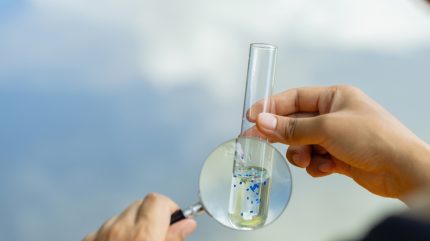
Microplastics have become an alarming environmental concern, infiltrating ecosystems and even human bodies.
Defined as plastic particles smaller than five millimetres, these tiny pollutants are found in oceans, soils, and the air we breathe. While their presence in cosmetics and synthetic textiles is well-documented, one often-overlooked source is packaging.
Whether through plastic containers, films, or coatings, packaging materials contribute significantly to microplastic pollution, sometimes in unexpected ways.
How microplastics enter the environment through packaging
Plastic packaging is ubiquitous, serving as a protective barrier for food, beverages, and consumer goods. However, the very materials designed to preserve products often degrade into microplastics, inadvertently entering the environment at multiple stages.
During the manufacturing process, packaging materials such as polyethylene, polypropylene, and polystyrene are cut, moulded, and processed.
These operations generate plastic dust and fragments, which can escape into the air and water systems. Transportation and storage also contribute; friction, pressure, and temperature fluctuations can cause minute plastic particles to shed from packaging surfaces.
Once in the hands of consumers, further degradation occurs through handling and usage. Repeated opening and closing of plastic containers, cutting through packaging films, or microwaving plastic-wrapped food can all lead to microplastic release.
Even biodegradable plastic alternatives may break down into smaller particles rather than fully decomposing, prolonging their environmental impact.
The role of food and beverage packaging in microplastic contamination
Food and beverage packaging plays a significant role in microplastic contamination. Many food-grade plastics contain chemical additives to enhance flexibility, durability, or heat resistance. Over time, exposure to moisture, oils, or heat can cause these plastics to degrade, leading to microplastic shedding.
Single-use plastic bottles are a prime example. Studies have shown that bottled water often contains microplastic particles, introduced through the bottling process, cap friction, or the slow breakdown of the plastic itself.
Similarly, plastic-lined coffee cups, often mistaken for paper-based solutions, can shed microplastics into hot beverages when exposed to high temperatures.
Additionally, vacuum-sealed and cling film-wrapped foods are at risk. The mechanical stretching of plastic film during packaging and subsequent handling can cause microscopic fragments to detach.
This means that even fresh produce, while seemingly untouched by plastic, may carry microplastic contaminants from its packaging.
Potential health and environmental risks of microplastic exposure
Microplastic contamination raises pressing concerns for both human health and the environment. Although research on its effects is still evolving, early findings suggest significant risks.
When consumed through food and beverages, microplastics may accumulate in the digestive system, potentially leading to inflammation or interference with nutrient absorption.
Some studies suggest that certain plastic additives, including endocrine-disrupting chemicals like bisphenol A (BPA) and phthalates, could leach into food, affecting hormonal balance and overall health.
Environmental implications are equally severe. Microplastics from packaging contribute to soil and water pollution, posing a long-term threat to ecosystems. Marine organisms often mistake these tiny particles for food, leading to bioaccumulation throughout the food chain.
As predators consume contaminated prey, microplastics work their way up, eventually reaching humans.
Moreover, microplastics have been detected in remote environments, from Arctic ice to deep-sea sediments. Their persistence means they continue to circulate long after their original source has broken down, making mitigation efforts challenging.
Moving towards sustainable packaging solutions
With growing awareness of microplastic pollution, industries and consumers alike are exploring sustainable alternatives to conventional plastic packaging. Innovations such as plant-based bioplastics, edible packaging films, and refillable containers are gaining traction.
However, it is crucial to ensure that these alternatives truly decompose rather than breaking down into smaller plastic fragments.
Consumers can also contribute by choosing packaging-free options where possible, supporting companies with sustainable initiatives, and properly recycling plastic waste. Governments and regulatory bodies are increasingly stepping in, enforcing stricter packaging regulations to minimise microplastic pollution.
While eliminating microplastics from packaging entirely remains a challenge, collective action can significantly reduce their impact. By prioritising sustainable materials, mindful consumption, and responsible disposal, society can take meaningful steps towards a cleaner, healthier future.
Microplastics in packaging may be an unintended consequence of modern convenience, but by rethinking our reliance on plastic, we can pave the way for a more sustainable world.



